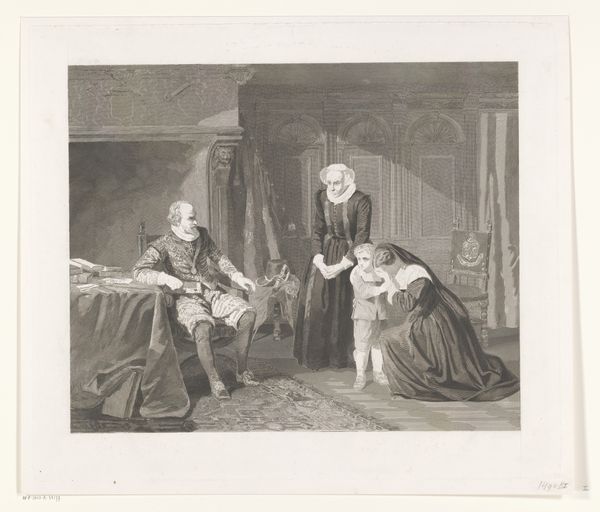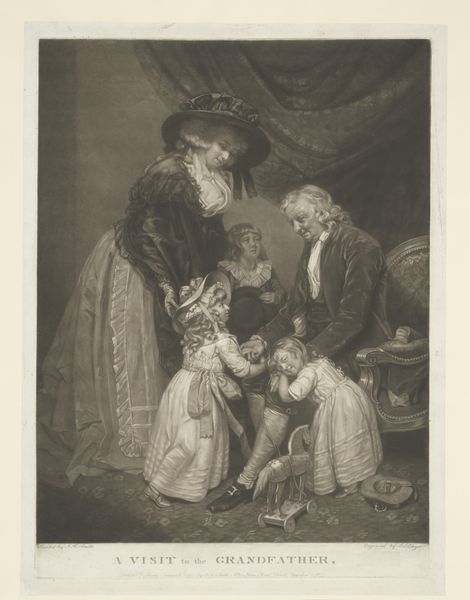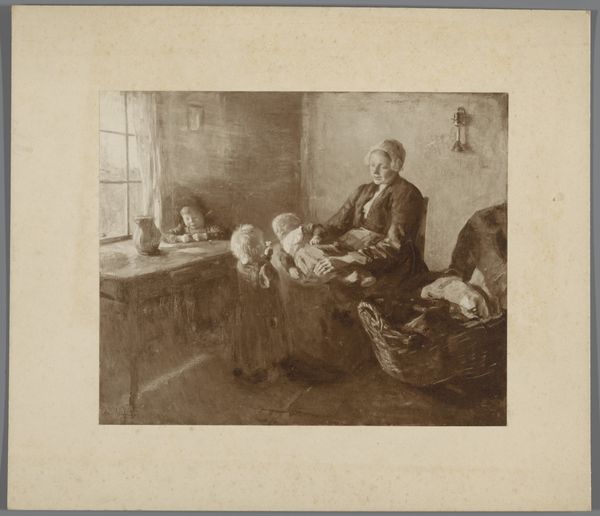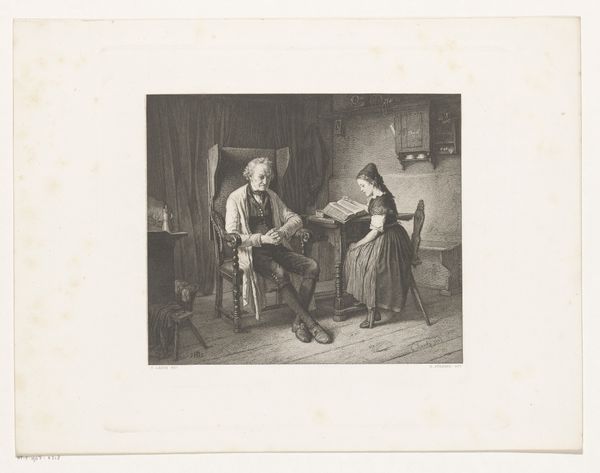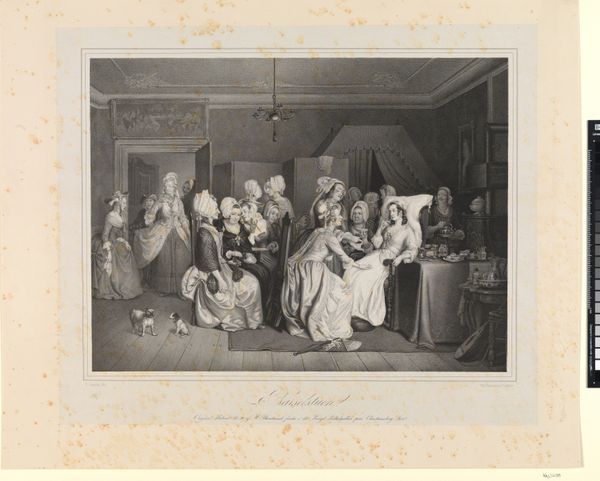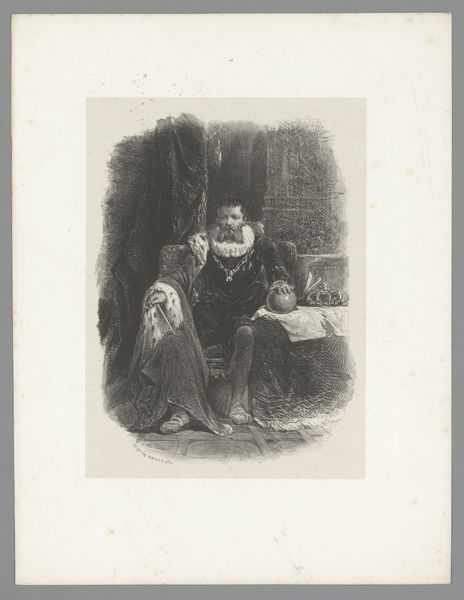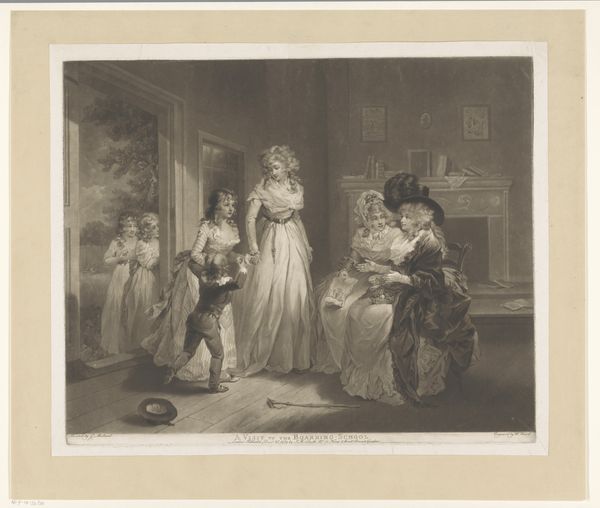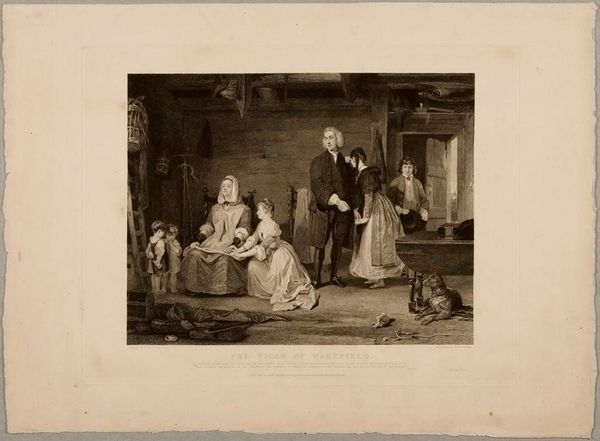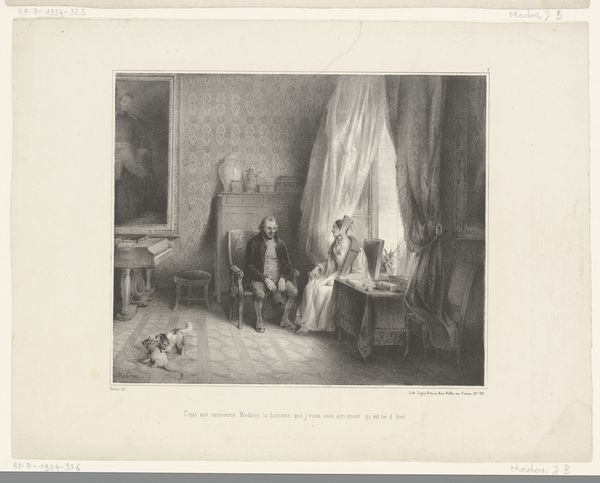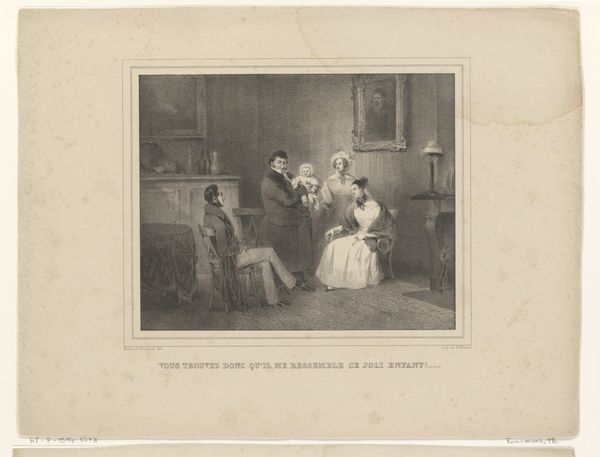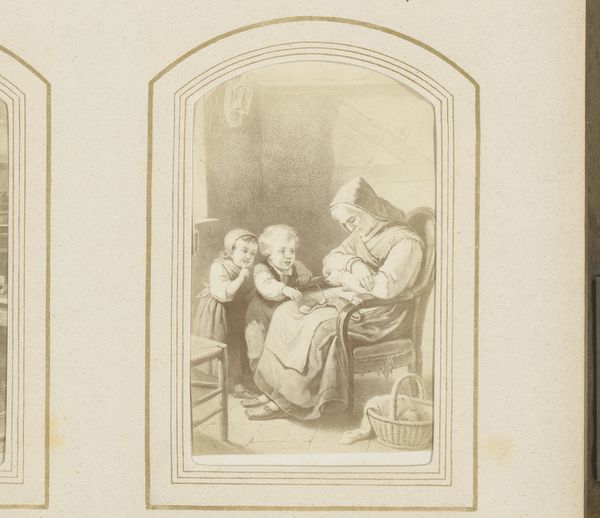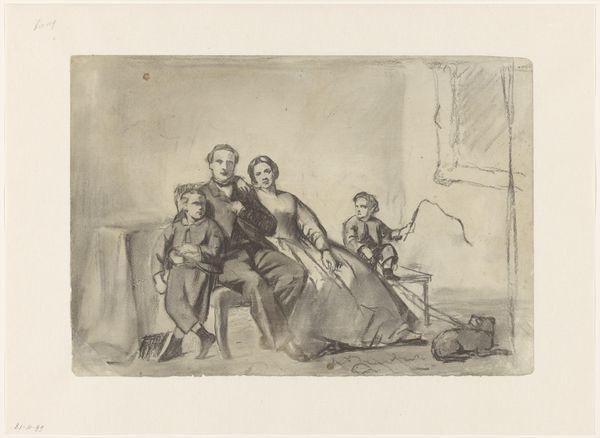
Fotoreproductie van een gravure van de weduwe van Johan van Oldenbarnevelt bij prins Maurits in 1628 1850 - 1900
0:00
0:00
Dimensions: height 59 mm, width 74 mm, height 62 mm, width 105 mm
Copyright: Rijks Museum: Open Domain
Curator: Here we have an intriguing image: a photo reproduction of an engraving dating roughly between 1850 and 1900, depicting a rather charged historical scene. Editor: It's heavy. A somber atmosphere really settles in, even just looking at the sepia tones of this photograph. A starkness—look at the dark gowns, and then the rather blank background. A stark contrast. Curator: Indeed. The original engraving recreates the moment the widow of Johan van Oldenbarnevelt pleads with Prince Maurits in 1628. Consider the social dynamic – a powerful, seated figure contrasted with kneeling supplicants. What meaning do you derive from such an image? Editor: The kneeling is loaded. The body language, particularly that of the child tugging at the Prince’s arm—such blatant displays of dependence, pleading for mercy. It reinforces the idea of Maurits's unyielding power, even, perhaps, his cruelty. Consider that those stark, austere blacks represent the height of Dutch Reformed Calvinism... it all conveys the rigidity of the age. Curator: And from a material perspective, note the print medium itself. The act of reproducing this moment through engraving and photography suggests a desire to preserve, commemorate, and perhaps even critique this event over time. Who were the engravers? Who commissioned it? What was their access to images from the past? And finally, who consumed these prints? What was the relationship between power, print, and perception in Dutch society, then and now? Editor: Good point about access. A photo reproduction brings with it layers of dissemination. To engrave, and then photograph for further reproduction transforms this image from one meant for, maybe, a small political elite to something more...democratized? Think, too, about what it represents. The artist—we don't know who—chooses a loaded subject: A mother and child beseeching a prince, suggesting deeper concerns with justice, mercy and inherited guilt. Curator: It invites further probing, wouldn't you agree? Investigating both the original engraving's creation and its later photographic reproduction tells a tale of evolving social and material value. Editor: Precisely! And delving into those visual cues gives us a deeper understanding of the psychological, political and ethical dimensions within the work, making this simple photograph endlessly thought-provoking.
Comments
No comments
Be the first to comment and join the conversation on the ultimate creative platform.

